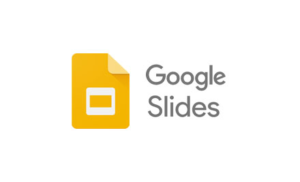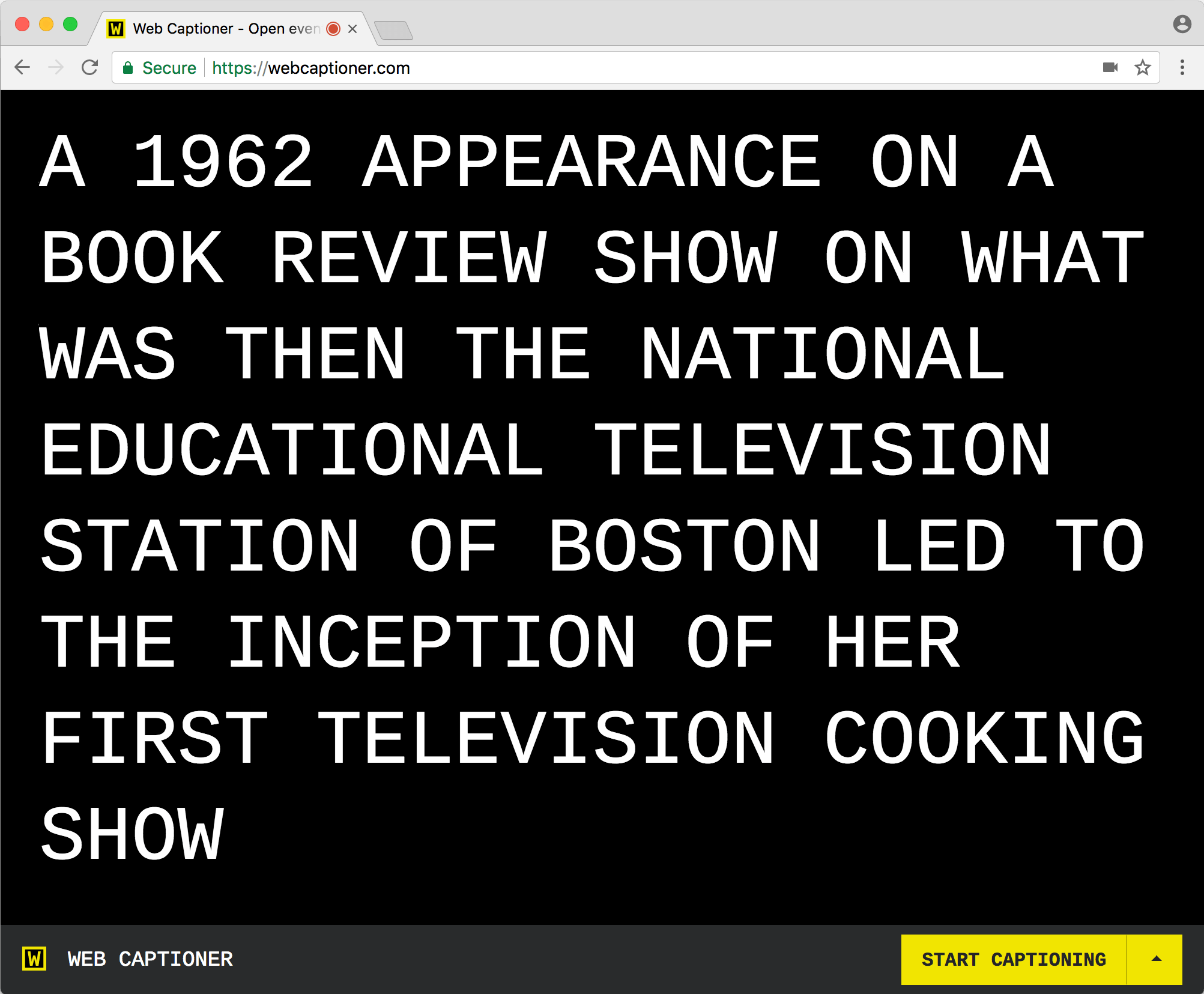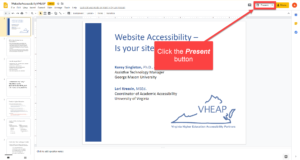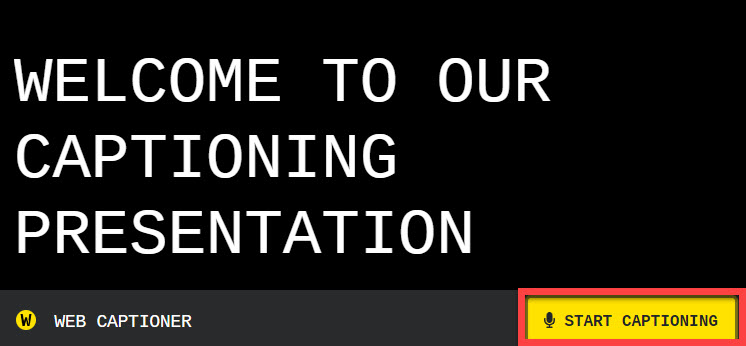The following tools offer options for streaming live captions using automatic speech recognition (ASR). ASR tools use artificial intelligence to convert speech into text. In recent years, educational technologies have started to integrate ASR into their platforms as a way to develop content that is more accessible and inclusive.
Turning on Live Captions in your Google Slides Presentation
Google Slides includes live captioning while presenting. Live captions will appear under the slides.

SAMPLE USE CASE (i.e., Using Google Slides in a synchronous session): If you are presenting in a synchronous session using Google Slides, simply share your screen and turn on the live captioning feature. Anyone viewing your presentation will be able to see the live captions.
Turning on Live Captions in your PowerPoint for Microsoft 365
Microsoft 365 provides live captioning for PowerPoint presentations. Captions can be overlaid, above, or below the presentation.
 SAMPLE USE CASE (i.e., Using PowerPoint for Office 365 in a synchronous session): If you are presenting in a synchronous session using PowerPoint for Microsoft 365, simply share your screen and turn on the live captioning feature. Anyone viewing your presentation will be able to see the live captions.
SAMPLE USE CASE (i.e., Using PowerPoint for Office 365 in a synchronous session): If you are presenting in a synchronous session using PowerPoint for Microsoft 365, simply share your screen and turn on the live captioning feature. Anyone viewing your presentation will be able to see the live captions.
Using Web Captioner as a Live Captioning Solution
Maestra (formerly Web Captioner) provides live captioning through the Google Chrome browser. When utilizing Maestra, please note that captions will exist in a separate browser window.
 SAMPLE USE CASE (i.e., Using Maestra as a last-minute option for providing live captioning in a face-to-face meeting): Maestra is a good, last-minute option when you meet with deaf and hard of hearing individuals and lack the time needed to set up appropriate accommodations.
SAMPLE USE CASE (i.e., Using Maestra as a last-minute option for providing live captioning in a face-to-face meeting): Maestra is a good, last-minute option when you meet with deaf and hard of hearing individuals and lack the time needed to set up appropriate accommodations.






